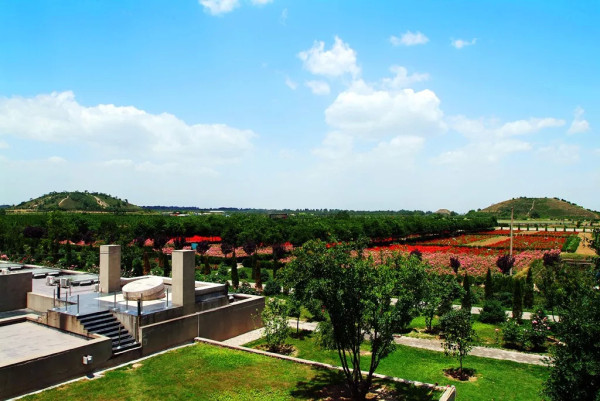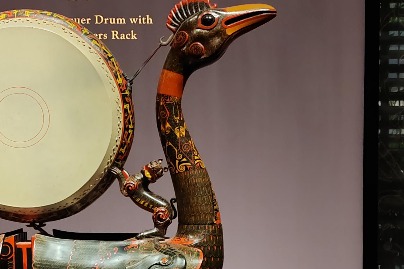Hanyangling Museum

Hanyangling Museum
汉阳陵博物馆
Address: East Section of the Xianyang International Airport Expressway, Xi’an, Shaanxi province
Hours: 8:00-19:00, March-November(No admission after 17:30)
8:00-18:00, December-February (No admission after 17:00)
General admission: 90 yuan (March-November)
65 yuan(December-February)

[Photo/Hylae]
The Jingdi Emperor (r. 156-141 BC)was the sixth ruler of the Western Han Dynasty (206BC- AD 24). He ruled the country for 17 years. His reign, along with that of his father the Wendi Emperor (r. 179-157 BC), is known as the prosperous Rule of Wen and Jing (180-141 BC), and is considered to be a golden age in Chinese history. The Hanyangling Museum was established on the tomb complex made up of the tomb of the Jingdi Emperor Liu Qi (known as the Yangling tomb), the tomb of his empress Lady Wang, the tombs of his concubines, subordinate burial pits, attendant tombs, and the heritage site of a ritual structure. It boasts the largest area of any museum in China.
Although their exact location and measurements are known ,the tombs of emperor and his wives are never excavated out of respect for the dead. Yet the highlight of the museum may be the underground exhibition hall installed in a section of the subordinate burial pits surrounding the emperor's tomb, which was excavated for the construction of the road to the Xianyang International Airport in 1990.Visitors can walk into the underground space and step on the transparent temperature-resistant glass floor to view the excavated pits wit h original burial items in them.
To the southwest of the emperor's tomb is a ritual structure, in the center of which lies the massive "Compass Stone" (luojing shi). It is presumed to have been used to orient and calibrate geographic positions when the Yangling Mausoleum was planned. It is considered the world’s first markstone (a type of stone used for measuring). It has twelve doors evenly distributed on four sides.
The museum also attracts visitors through its special programs: simulation archaeology and relic conservation. Simulated Excavation allows history enthusiasts and archaeological trainees to participate in the real life excavation of historical ruins. Visitors can experience the novelty and excitement of personally discovering relics while learning about history. The Relic conservation program teaches antique collectors and enthusiasts about basic conservation techniques. In the conservation room, archaeologists demonstrate and explain basic restoration techniques to visitors. (Reservations for the two programs are required one week in advance for an additional fee)
Last Updated: Dec 07, 2018




